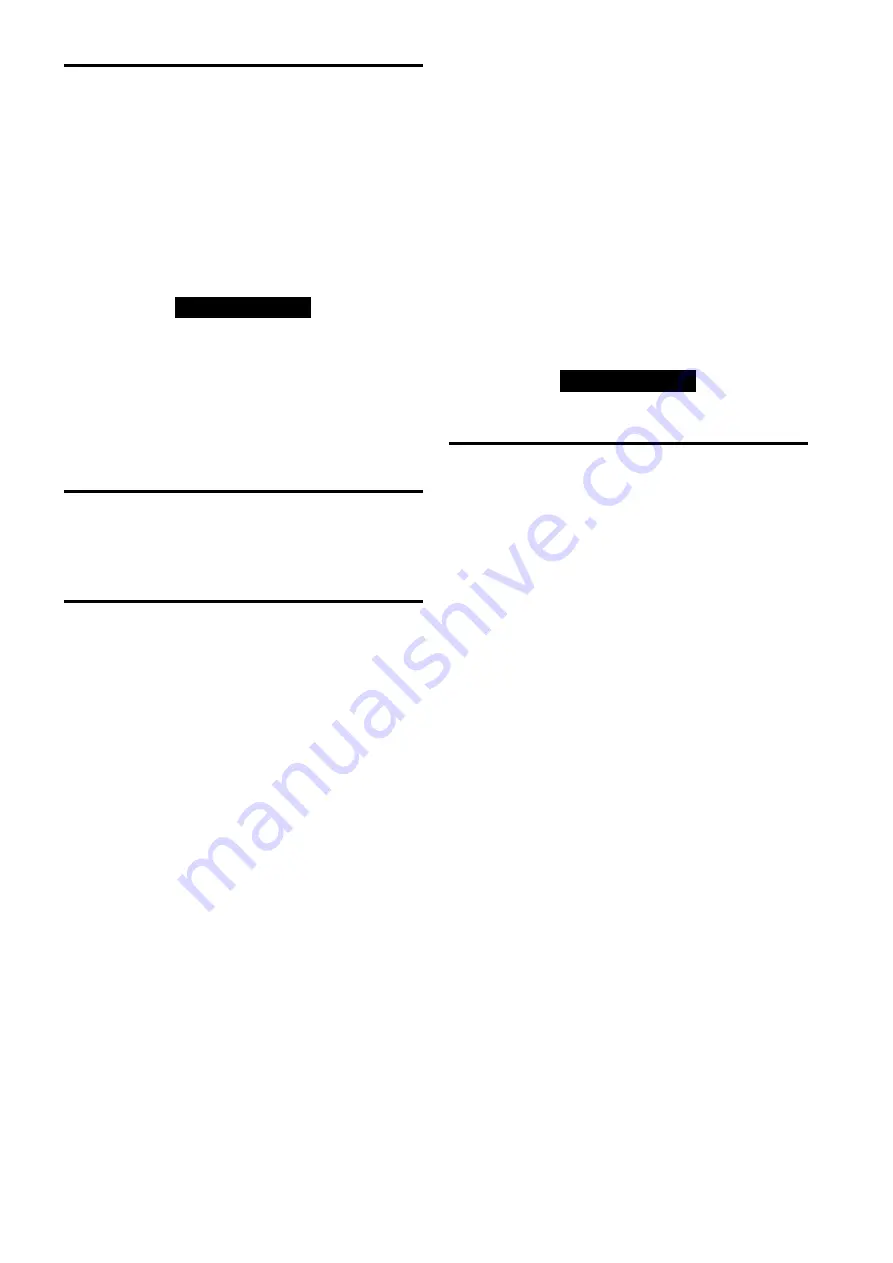
n
Winch Brakes
n
Manual Drum Band Brake (Standard)
The manual drum band brake is applied by pushing down on handle and released
by pulling up. If handle is pushed down fully, it should lock in that position and
prevent band rotation, until released by operator. The brake must be kept properly
adjusted to hold required load. Refer to ‘Adjustments’ in “MAINTENANCE” section
in Product Maintenance Information Manual for instructions.
n
Automatic Drum Band Brake
The automatic drum band brake is a spring applied, air released brake which utilizes
an air actuated, spring loaded cylinder, that automatically disengages brake when
motor is operated. Air pressure in cylinder overcomes spring pressure to release
brake. When control valve is placed in neutral position, air in cylinder is vented and
spring automatically engages brake to prevent drum rotation.
The cylinder clevis must be kept properly adjusted to hold required load.
NOTICE
•
Extended exposure to corrosive atmospheres can cause the band brake
lining to adhere to the drum. It is recommended when winch is not in
operation and in a no load condition that the band brake be left in a released
position.
n
Automatic Disc Brake (Standard)
The automatic disc brake is a spring applied, air released brake. Using an air actuated,
spring loaded piston, the brake automatically disengages when motor is operated
and engages when throttle is returned to neutral position.
Air pressure ported through brake housing overcomes spring pressure and moves
piston which releases brake. When control valve is placed in neutral position, air is
vented, spring pressure overcomes air pressure and spring pressure moves piston,
engages brake and prevents drum rotation.
n
Limit Switches
Limit switches are standard on -CE winches.
Pre-set limit switch settings prevent winch wire rope payout and haul-in by stopping
air flow to the winch motor when a set point has been reached. It is the owner’s and
operator’s responsibility to adjust winch operating limits prior to using the winch.
To adjust the limit switch set points, refer to ‘Limit Switches’ on page 6.
n
Emergency Lowering
The following information is provided to allow for emergency lowering of a person
if air supply is lost to winch. These procedures should be used if no other method of
safely lowering personnel is available.
n
Precautions
1. Emergency lowering operations must be performed by a minimum of two
personnel trained in the operation of the winch.
2. Communication must be established between lifted person and winch
operators. Operators should be able to visually monitor lifted person until
landed.
3. If line of sight between operators and lifted person is not possible, signals must
be conveyed to the operators.
4. The winch must be isolated from the supply air system during emergency
lowering operations.
n
Procedure (-CE versions)
Three Way Valve
Refer to Dwg. MHP3143 on page 14, A. Normal Inlet Air Supply; B. Rotate handle
to use in normal condition; C. FRL; D. Emergency Lowering Inlet.
This device allows the person to be moved the shortest way to safety in case of
normal air supply failure. In the event of air supply failure, operate the three way
valve from normal air supply to the emergency inlet. For an emergency power
source, a 50 litre nitrogen bottle can be used.
1. Open the emergency power source. Rotate valve lever towards normal inlet air
supply side.
2. Ensure that downstream pressure is 5 to 7 bar.
3. Operate winch slowly to open brakes for lowering the person the shortest way
to safety.
NOTICE
•
After each use of emergency lowering device, return the three-way valve
to the main air inlet and check the secondary power source is in proper
working condition and able to fulfil its task.
n
Winches Not in Regular Use
1. Equipment which has been idle for a period of one month or more, but less than
six months, shall be given an inspection conforming to the requirements of
‘Frequent Inspection’ on page 9 before being placed in service.
2. Equipment which has been idle for a period of over six months shall be given a
complete inspection conforming with the requirements of ‘Periodic Inspection’
before being placed in service. Refer to Product Maintenance Information
Manual.
3. Standby equipment shall be inspected at least semi-annually in accordance with
the requirements of ‘Frequent Inspection’ on page 9.
4. All oils must be drained and replaced with new, and all grease cavities shall be
packed to the prescribed limit. Refer to “LUBRICATION” section on page 9.
Product must be operated for at least 15 seconds in both directions with well
lubricated, dry air.
8
Form MHD56437 Edition 7





















